Towards the end of the summer term 1965, as we finished our third year at the City of Coventry School, we spent a week camping at the Hillfield Franciscan Priory Nr Cerne Abbas in Somerset.
The aims (according to their site) are –
“Franciscan Life and Spirituality
The Hilfield Community has Jesus Christ at its heart and, following the example of St Francis, the ‘little poor man’ of Assisi, who saw the love of God in those he met and in the world around him, we seek to:
Live in simplicity, humility and peace with each other
Welcome others who come to visit us, especially the marginal and the stranger
Have care for and delight in our environment
Work for justice and peace in our world
Witness to the abundant generosity of God in our life together
Share the vision of living peacefully and sustainably in our world
Join in the song of all creation in praise and thanksgiving.”
……………………………….
School Trip To Cerne Abbas
We set off from the school with our camping gear to the railway station – which I seem to remember being part of the Tenbury Wells to Bewdley line. However Michael Billings points out that –
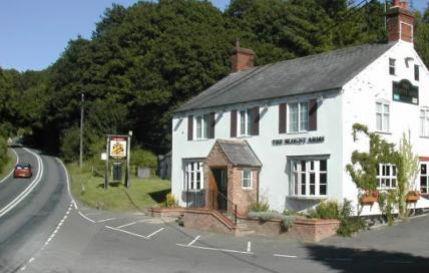 |
| Blount Arm – Near Cleobury Station |
“When you went to Cerne Abbas you must have gone from Woofferton Junction or Kidderminster as the Bewdley to Tenbury Wells via Cleobury Mortimer line was closed to passengers in 1962 and to freight in 1964 when it was finally closed down.”
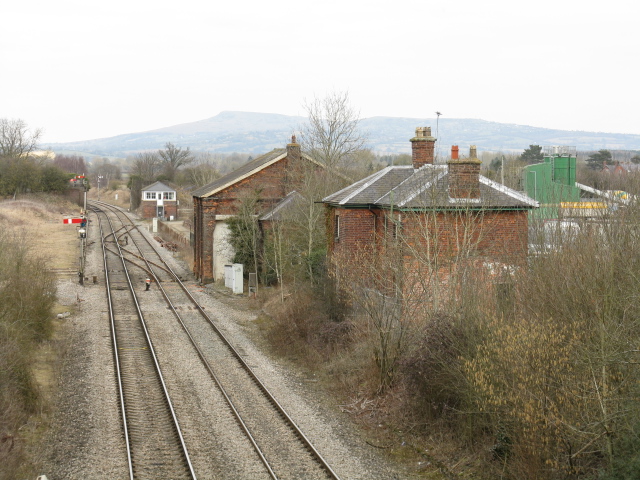 |
| Woofferton Station |
I can’t remember going any further than along the Cleobury to Bewdley road but the facts suggest otherwise! If anybody remembers where we got the train to Cerne – let us know.
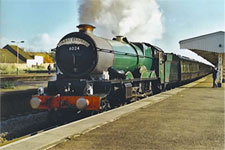 |
| Yeovil station |
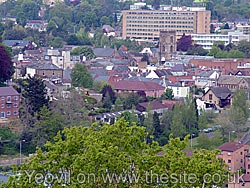 |
| Yeovil |
This was a study and adventure week. Although the release of Paul Simon’s song Homeward Bound didn’t occur until December 1965, the line in the song “each town looks the same to me, the movies and the factories” evokes memories of the journey down country and the slow crawl across the bridge at Yeovil.
We finally arrived at Cerne Abbas station, a little out of the village in a pleasant country location but with a longish walk to the friarage.
The masters who came with us were Barry Mathews, Mr Thomas and I think Mr Hinchliffe. We camped in the grounds and in the evening cooked beans and sausages and sang scout songs, played games. During the day, we attended services, explored the friarage and the shop and explored the local country side, assembling information for our projects.
Of course, the highlight of the trip was a visit to the Cerne Abbas giant. No prizes for guessing on what part of the Giant’s anatomy we sat to eat our sandwiches!
The Cerne Abbas Giant from http://en.wikipedia.org/wiki/Cerne_Abbas_Giant
The Cerne Abbas Giant, also referred to as the Rude Man or the Rude Giant, is a hill figure of a giant naked man on a hillside near the village of Cerne Abbas, to the north of Dorchester, in Dorset, England. The 180 ft (55 m) high, 167 ft (51 m) wide figure is carved into the side of a steep hill, and is best viewed from the opposite side of the valley or from the air. The carving is formed by a trench 12 in (30 cm) wide, and about the same depth, which has been cut through grass and earth into the underlying chalk. In his right hand the giant holds a knobbled club 120 ft (37 m) in length. A 1996 study found that some features of the image have changed over time; notably, the study concluded that the figure originally held a cloak in its left arm and stood over a disembodied head.
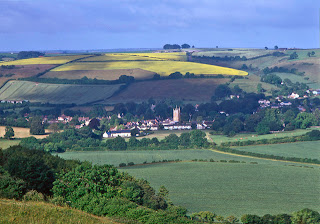 |
| Cerne Abbas |
The figure’s origin and age is unknown. Early antiquarians associated it with a Saxon deity, though there is little evidence for such a connection. Other scholars sought to identify it with a Celtic British figure or the Roman Hercules, or some syncretization of the two. The 1996 discoveries strengthened the identification with Hercules, who was often depicted wielding a club and carrying a cloak made from the Nemean Lion. However, since the first descriptions of the figure do not appear until the mid-18th century, many scholars conclude that it is not significantly older than that. Regardless of its age, the Cerne Abbas Giant has become an important part of local culture and folklore, which often associates it with fertility.
Like several other chalk figures carved into the English countryside, the Cerne Abbas Giant is often thought of as an ancient creation. However, as with many of the other figures, its history cannot be traced back further than the late 17th century, making an origin during the Celtic, Roman or even Early Medieval periods difficult to demonstrate. Above and to the right of the giant’s head is an earthwork known as the “Trendle”, or “Frying Pan”. Medieval writings refer to this location as “Trendle Hill”, but make no mention of the giant, leading to the conclusion that it was probably only carved about 400 years ago.[1][5] In contrast, the Uffington White Horse — an unquestionably prehistoric hill figure on the Berkshire Downs — was noticed and recorded by medieval authors.
The Anglican Franciscan Friary – near Cerne Abbas
Raymond Bothwell I heard that the gift shop at the abbey was run on trust ,,, and a lot of stuff was removed without payment.
Ralph Aldhous I know some people nicked stuff from the shop and I didn’t like it. Not just because I liked the Friars and respected the fact that it was on trust, but also for that very reason, I didn’t see any point – it was like shooting fish in a barrel. Anyway, it was all religious stuff. I think I bought a wooden crucifix because I liked it. If I did I don’t know what happened to it.
Chris Bailey We also went there in 61/62
Ken Hammond We certainly did Chris, some of us went with Jim Lovatt to visit his mother at Ottery St Mary.
Paul Nicholas Williamson As for the Cerne Giant, remember it well it must have been about 61 when we went with Jim Lovatt and Trivs Thomas and I can always remember having a jimmy riddle in the River Piddle as you do along with everybody else in our group. We didn’t make the giant but you could see loads of people rushing around his meat and two veg stabbing them with there walking staffs.
Was an eminent designer of stained glass and led the small team which created the 10 windows in the nave of the new Coventry Cathedral, consecrated in 1962 . He spent a year at the Anglican Franciscan Friary near Cerne Abbas, Dorset, but when war broke out he forsook the monastic life to fight fascism. Read more here http://www.telegraph.co.uk/news/obituaries/8592455/Lawrence-Lee.html

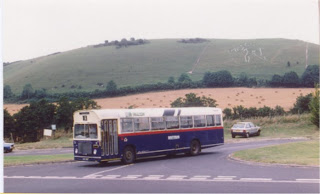




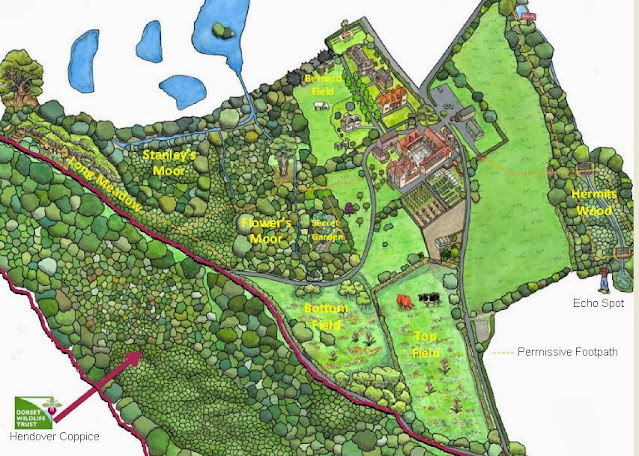

I don't remember the journey down or back, but I loved Cerne Abbas and the countryside around and have returned there several times since. Like Dean I remember the strawberry picking: the friars cultivated an extensive garden. I also remember the gift shop and eating with the monks in their refectory. A couple of the friars came to our camp on the hill opposite the friary and we sang songs including 'Swing low sweet chariot'.
I remember we went on a coach, and crossed the river Avon via the Clifton suspension bridge, no M5 then, and thumbing a lift off some sailors in a truck, to Weymouth from near the priory, there was a few lads with me, but can't remember who they were. Stephen Donald.